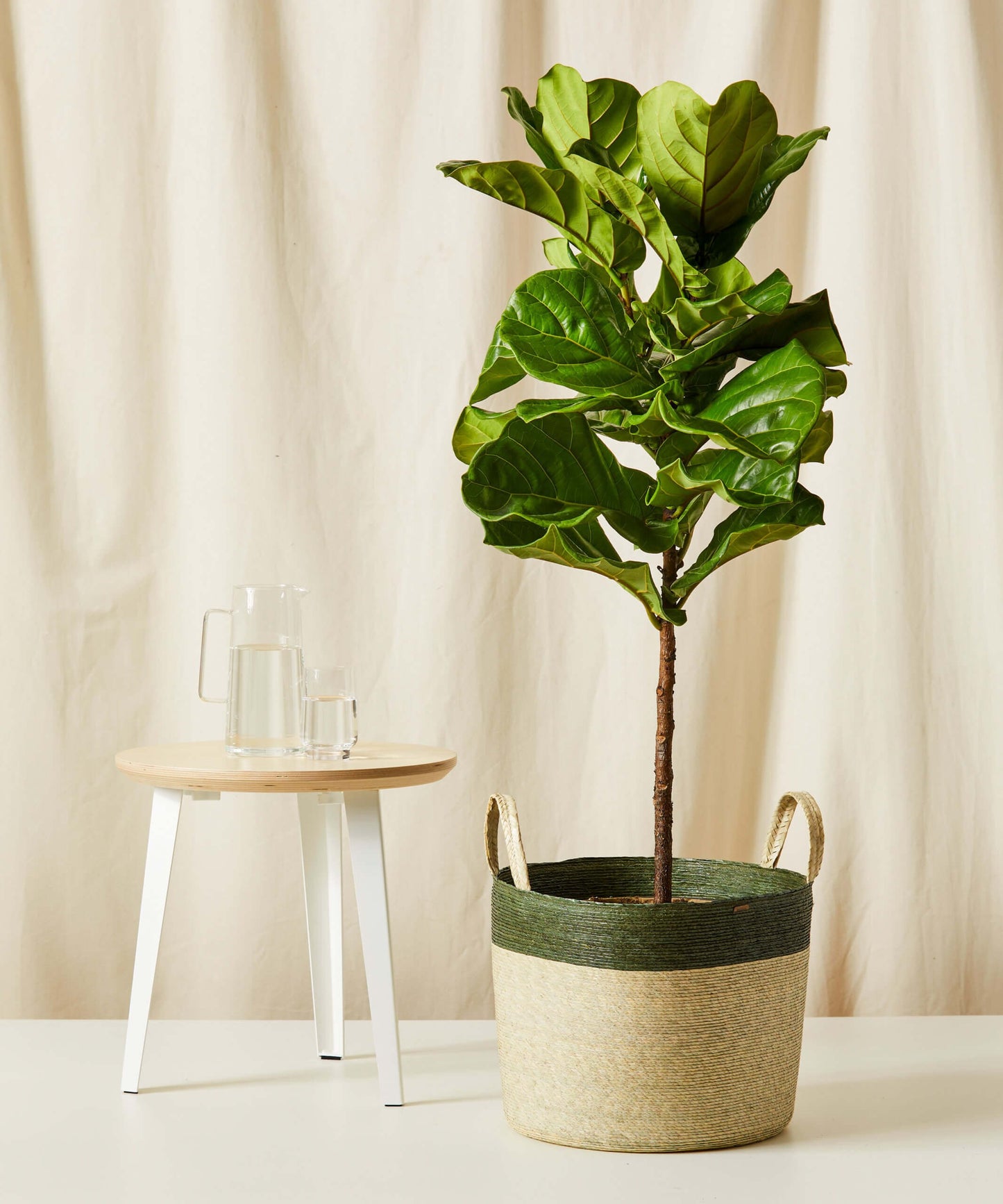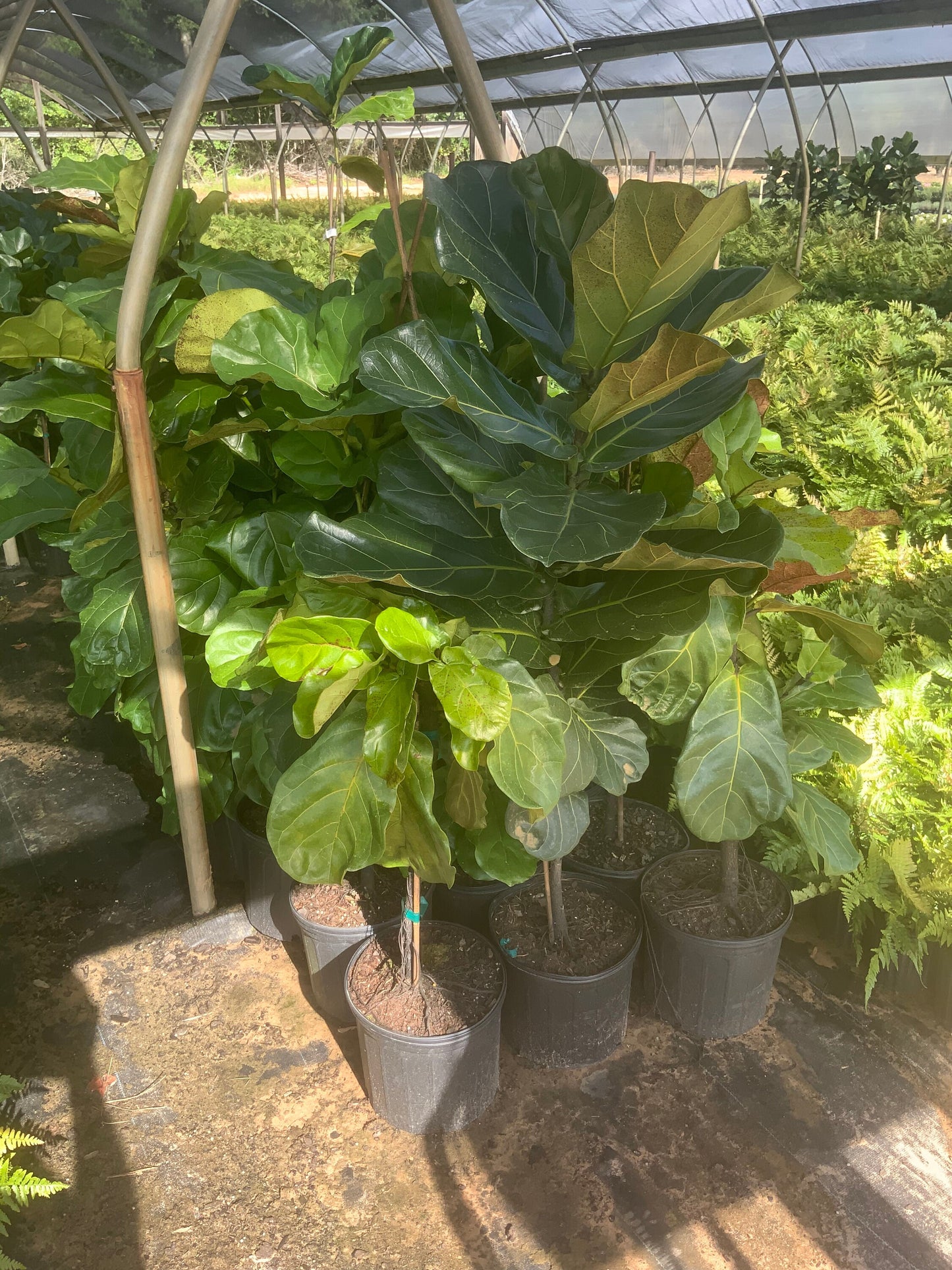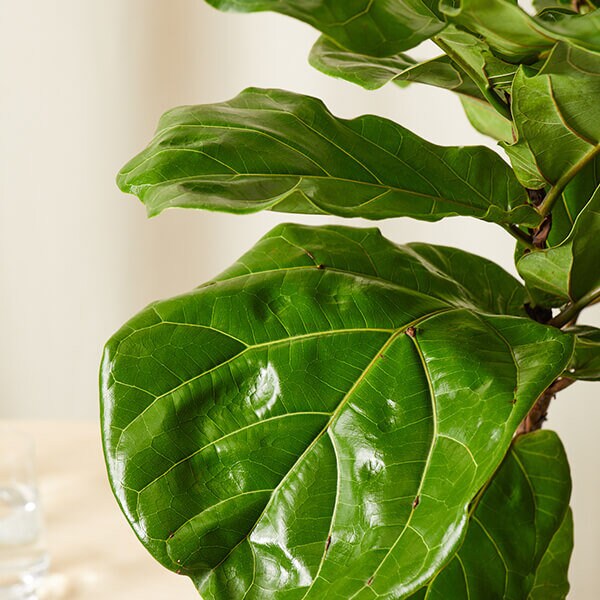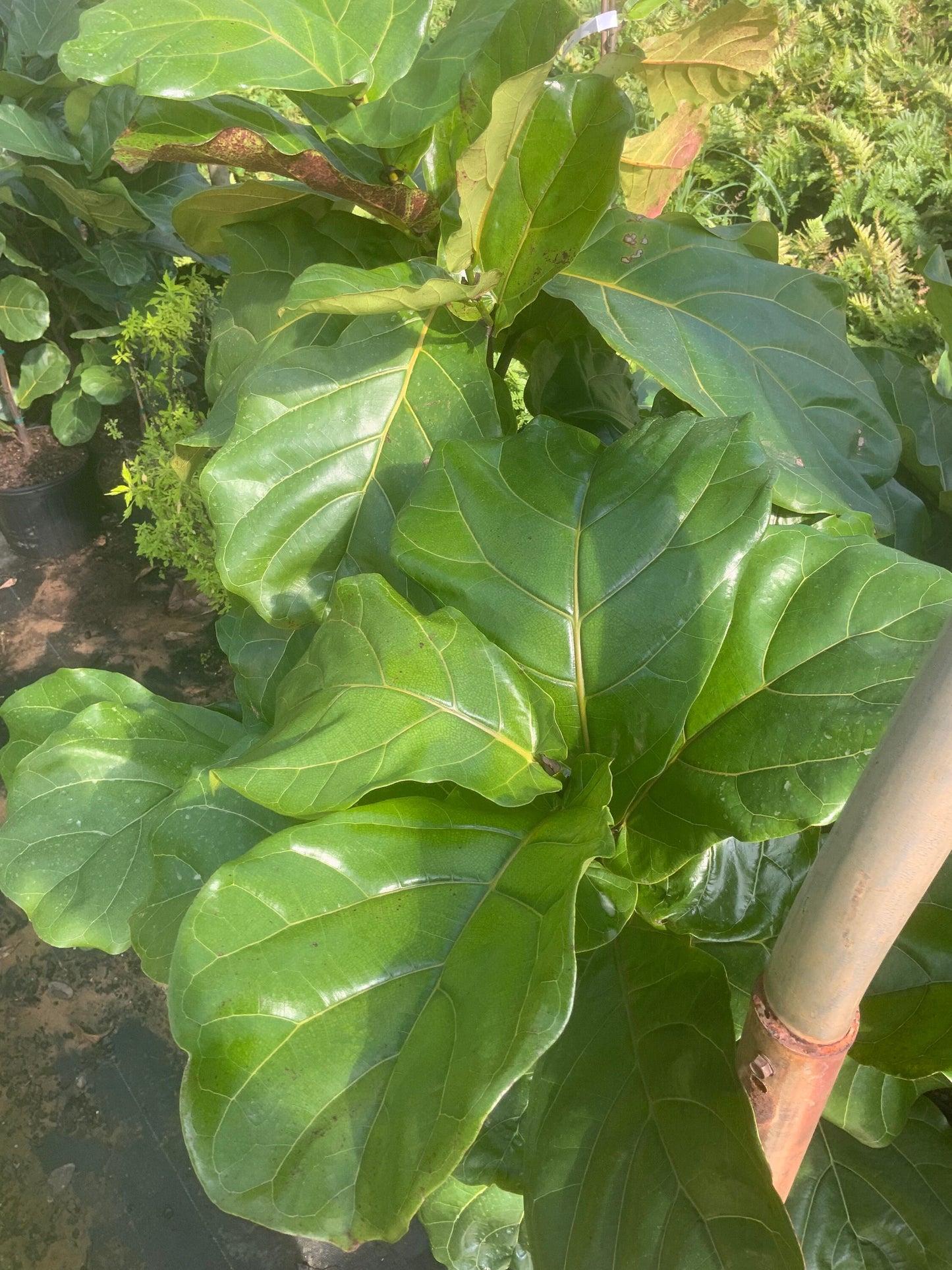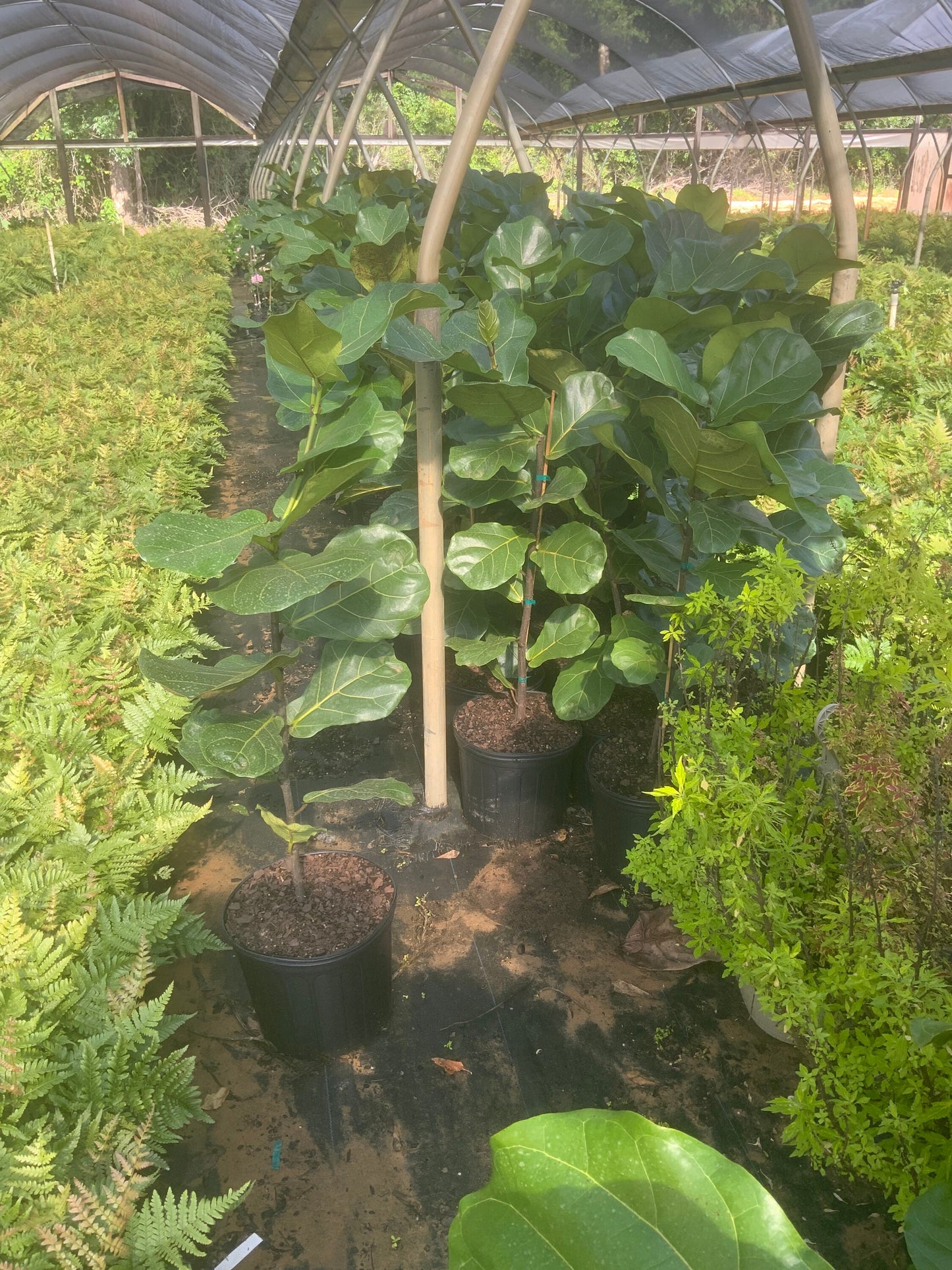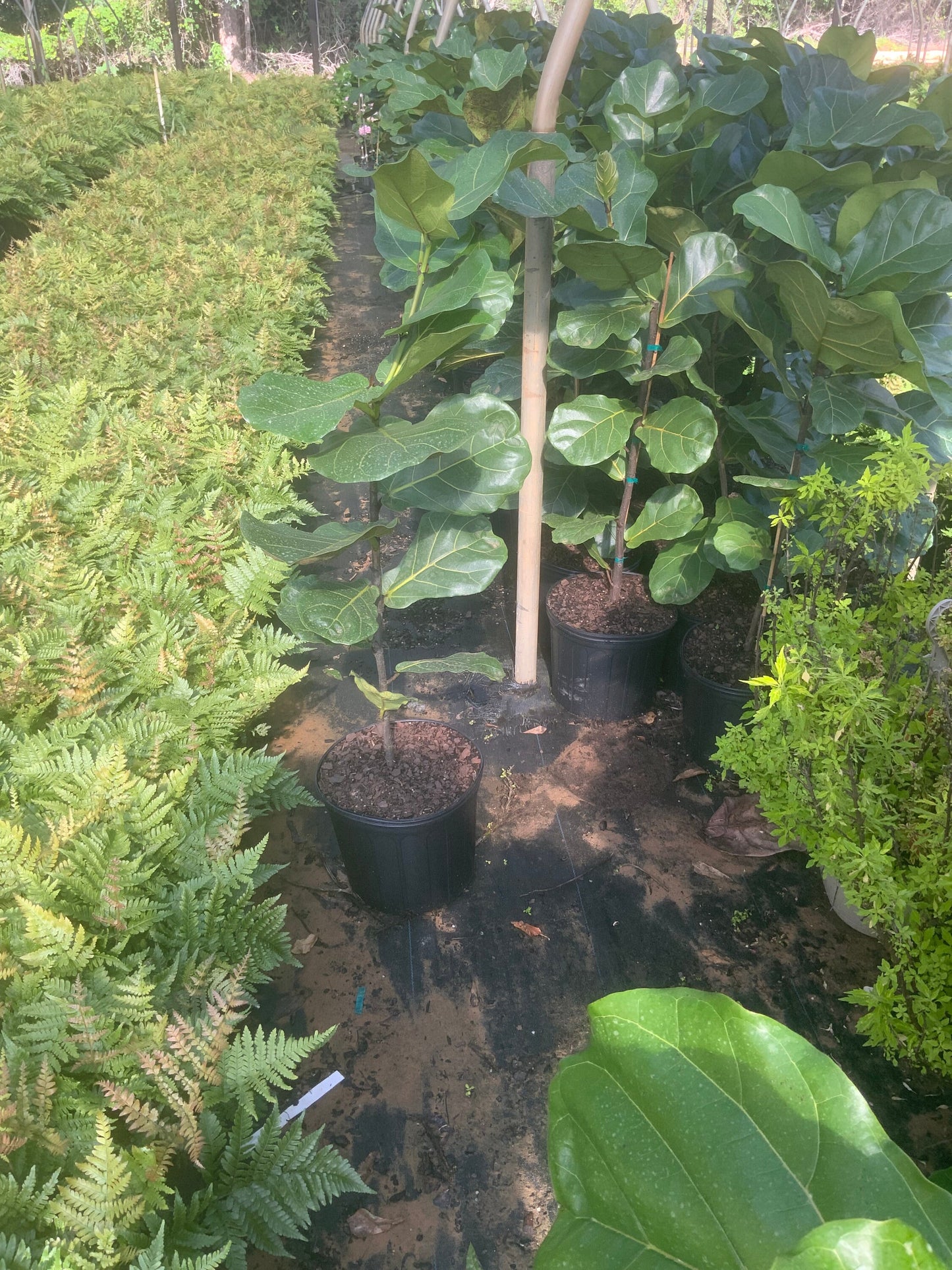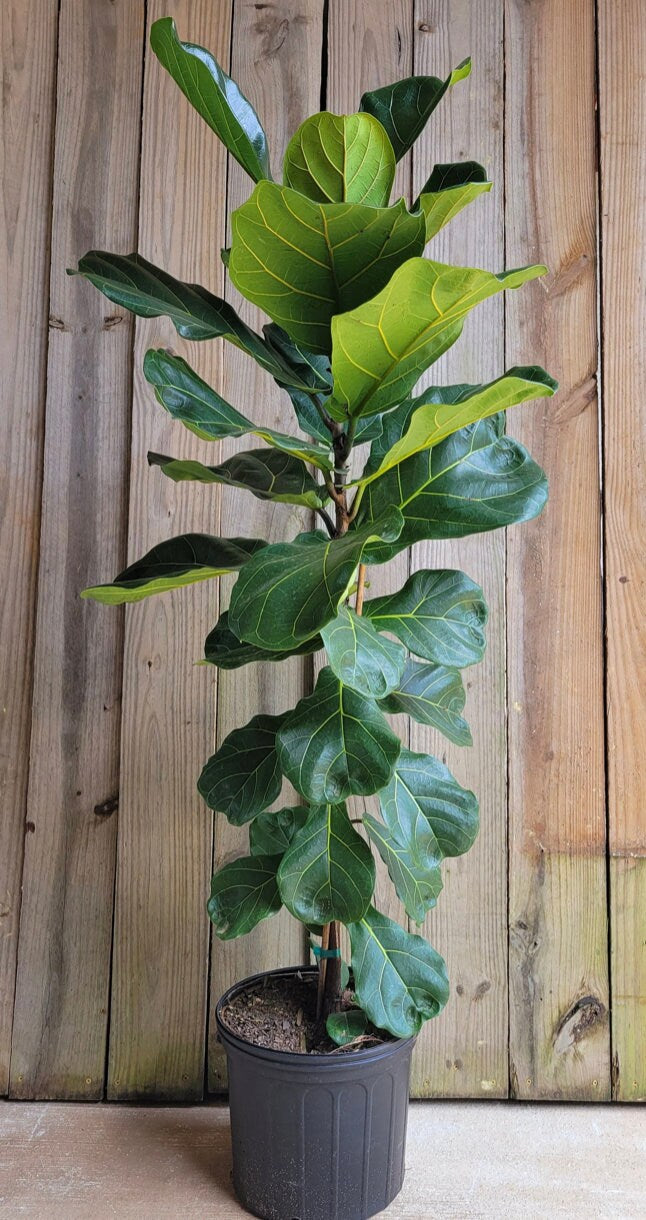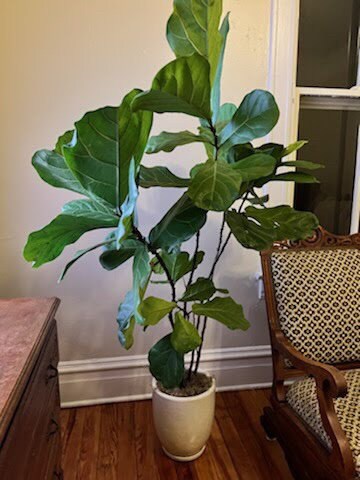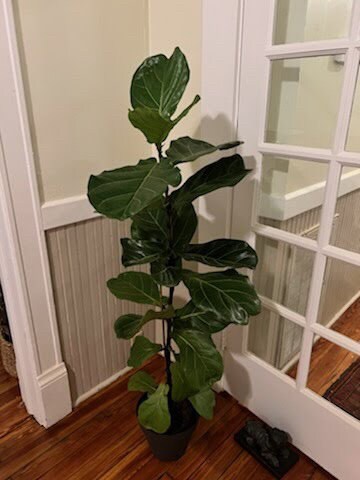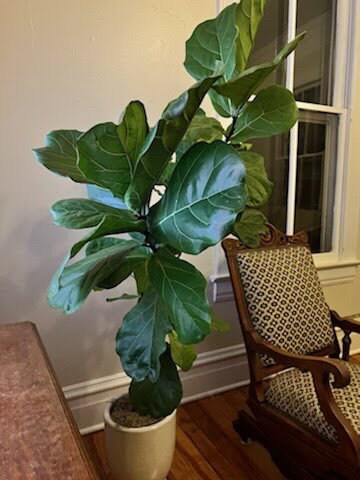FIDDLE LEAF FIG - 3 to 4 Feet Tall - 3 gallon
FIDDLE LEAF FIG - 3 to 4 Feet Tall - 3 gallon
Couldn't load pickup availability
Great Indoor House Plant!
Fiddle Leaf Fig is the best indoor plant for any office or home. The Fiddle Leaf Fig is easily recognizable and loved for its distinctive foliage. This tall, dramatic plant has very large, heavily veined, violin-shaped leaves that grow upright. It’s not bushy, making it a beautiful interior design addition for a brightly lit corner or cozy nook in your home.
Native to the tropic climate of Western Africa, the Fiddle Leaf Fig thrives in very warm, bright, and humid conditions. This can make them somewhat challenging to grow indoors, but luckily they are relatively tough and can withstand less than perfect conditions.
They will need an area with brightly filtered light or an eastern facing window. Careful watering and warmer temperatures will help this gorgeous indoor plant thrive.
LIGHT
Your Fiddle Leaf Fig will grow best with consistent, indirect bright light. Turn the plant every few months once it begins to lean towards the light.
WATER
Water when the top 50%-75% of the soil becomes dry, then thoroughly drench until the water drains into the saucer. Empty the saucer if the water level is high so as not to drown the roots.
HUMIDITY
As a native to the tropics, Fiddle Leaf Figs thrive in warm, wet conditions. Mist the leaves to increase humidity around your plant, especially in the drier winter months.
TEMPERATURE
The Fiddle Leaf Fig enjoys warmer temperatures, but adapts easily to your home or office climate. However, it does not like cold drafts, so make sure you seal up drafty areas before situating your fig.
FOOD
For best results, feed your plant once during the spring and monthly throughout the summer. Over-fertilization can cause the Fiddle Leaf Fig to grow leggy and can even kill it. A little bit of food will go a long way to encourage growth and root health. No fertilizer is necessary during the winter when plant growth naturally slows.
TOXICITY
Fiddle Leaf Fig leaves are mildly toxic to humans and pets. Typically, ingestion will cause mouth and stomach irritation and possible vomiting.
ADDITIONAL CARE
Large leaves can collect dust. If you notice the leaves are dirty or dusty, wipe them with a damp cloth and gently dry to keep them clean and healthy. You can also add a teaspoon of dishwashing detergent to one gallon of water as a precaution against insects. Fiddle Leaf Figs do not like to be moved—if necessary to move your plant, be prepared for some leaf drop until it is acclimated again in approximately 2-3 weeks.
Share
